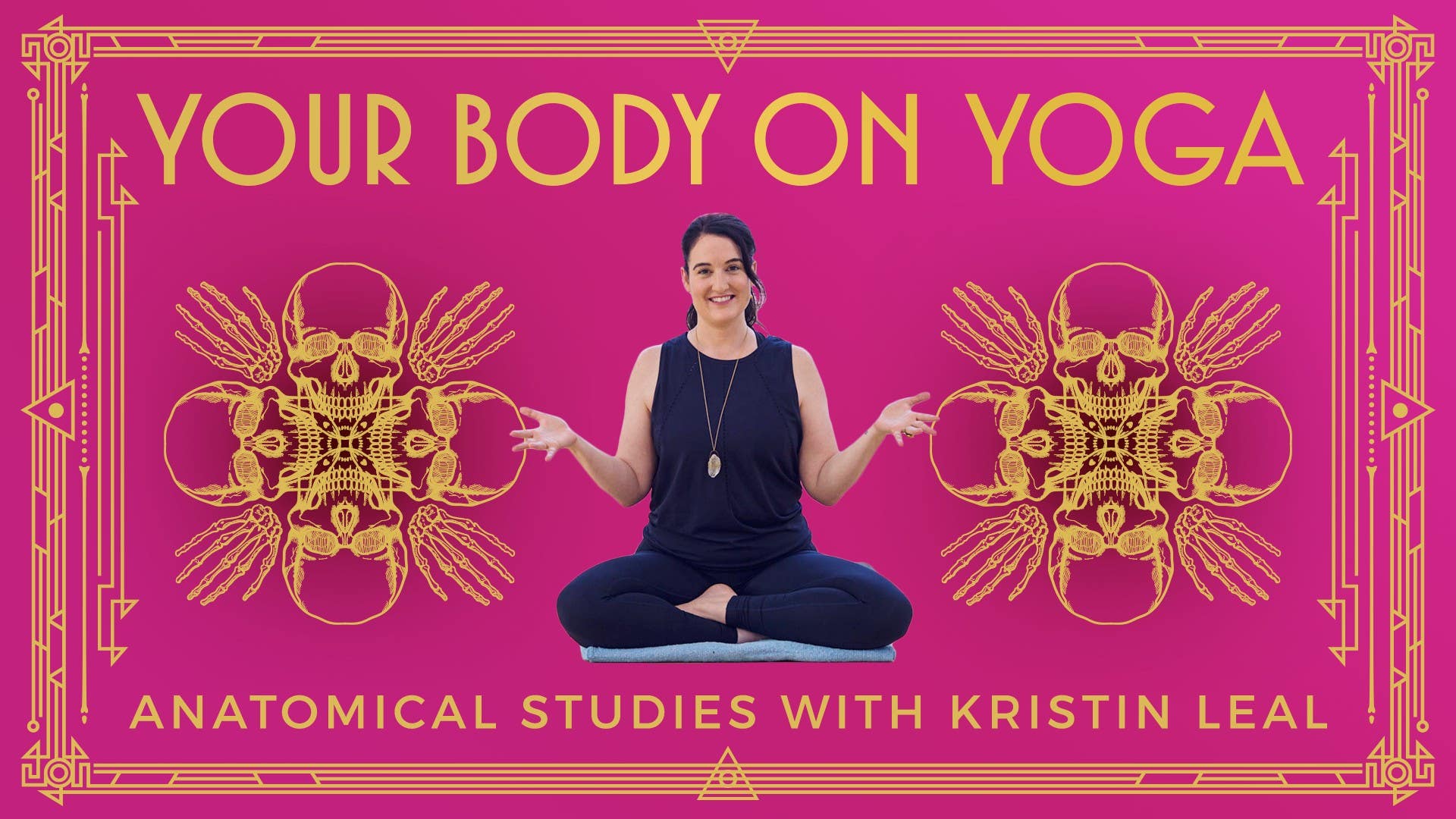Description
About This Video
Transcript
Read Full Transcript
So here's a shocker. There is no such thing as a downward facing dog. It's not an object. We can say these are flowers. This is a blanket. These are anatomical models. But down dog doesn't exist. It is just you experiencing down dog. And you experiencing down dog is going to be different from day to day. And it's also going to be different than your neighbor's experience of downward facing dog. There is no cookie cutter shape that we are looking to achieve. It doesn't exist. And the reason why, even if we get fussy with aligning, your feet must be hip distance apart. Your hands must be here. Your toes point in this direction. Even in that word alignment, if you look up that word, it means to align in a straight line, to make things straight. We are not straight. We are curvy, spirally, unique, round individuals. They are three dimensional. And it is impossible to put that in a protractor lines of demarcation that we sometimes refer to as the alignment for this pose must be this. And I think the best way to see that is to look at our own architecture, to look at our own bones, our skeleton. And it may seem a little boring or just not kind of dead. We think of skeleton sometimes as this kind of boring, sterile kind of tissue. And it's far from that. It is living, dynamic, ever changing, ever remodeling tissue. We have these little cells called osteoblasts and osteoclasts that are doing this constant build up and break down. And every time you do an action, if you pick something up, if you do a yoga pose, even just moving in a little dance move, you are providing stress, healthy stress on the bones when the muscle attached to that stocking over the bone called the periosteum, every time it pulls, it causes a little stress underneath that attachment. And that stress sends out a call like, hey, I'm breaking down. Bring me more bone. More bone goes to the area and builds up under that stress. Now we forget that and we don't appreciate that because most of the time we're looking at plastic anatomical models or a Halloween decoration of a skeleton or a two-dimensional picture. And it belies its really true nature. This looks very clean. It was made in a factory where it produced 10,000 fellow femur bones all looking the same. It looks very smooth and it looks kind of boring. When we look at actually real bones, real human specimens, their magic can be felt. If we look at the bones, you can see they're not straight. They're lumpy, bumpy, curved and spirals. In fact, everything in nature grows in spirals. We can even see this kind of spiral pattern as the femur grows and lengthens. It has this beautiful spiraling action. And then we can also start to recognize how unique each bone is and each individual, a combination of this 206 or so bones that make us up like 206 unique snowflakes. Never one to be reproduced just like you. And that needs to be held in our minds as we look at these poses, as we look at what we consider the correct alignment for these poses because it ain't going to show up the same for each individual. You can even see maybe some difference between maybe the length of the bones, right? This might determine what could be a posture that comes easily to you or not easily. We can consider the projection of parts of our bones, how they connect with other bones. Their articulation is always going to show up differently. If we look at this femur bone, the longest, strongest bone in your body, this upper leg bone, we have a few points that we can recognize. This is the ball of the ball and socket joint that has a femoral head. Now where we have a head, we have a neck. So where it tapers off here, we have the femoral neck. And then we have what's called the greater trochanter or this kind of lumpy bumpy piece on the outside. Now how it sits in your body, actually the femoral head is in the groin, kind of halfway between your pubic bone and the bump bone or the hip bone that we might kind of refer to it as. Halfway through, that's where we find the femoral head where it attaches or articulates with the bowl of our pelvis. This greater trochanter can be felt on the outside of your thigh here, the fleshy part. That's maybe the lump or bump you might feel if you're kind of lying on your side and rolling and trying to stabilize yourself. We have the long shaft of the femur and then we have where it, then we'll go ahead and articulate with our tibia or lower shin bone. We have these epicondyles, these little bumps that we might feel at the end of our thigh bone. Now just an orientation, we'll go into more detail in other episodes, but I just want you to take a look at the projection of the femoral head, neck and greater trochanter. We might have a shorter neck, a longer neck, a really big greater trochanter or a more petite greater trochanter. That's all going to determine how much movement you have before a bone will run into another bone. If you look at these femurs side by side, we can see if I held all of their knees in the same alignment straight up to the ceiling, their femoral necks and heads are projecting at different angles. If we held all of the femoral heads at the same angle, all of their knees are going to be projecting at different angles. This guy's knee out to the side, this guy and this guy straight up. This is going to make a difference.
This is not just the first three femur bones I found in my apartment. These are you. This is me. This is not Ripley's believe it or not. Can you believe these femur differences? This is you and me. This is what shows up in a yoga class. All of this variation, all of this uniqueness, all of this spirally beauty. This is what needs to be respected instead of trying to find some cookie cutter posture that no one can live up to.
Your Body on Yoga: Introduction to Anatomy
Comments
You need to be a subscriber to post a comment.
Please Log In or Create an Account to start your free trial.

















